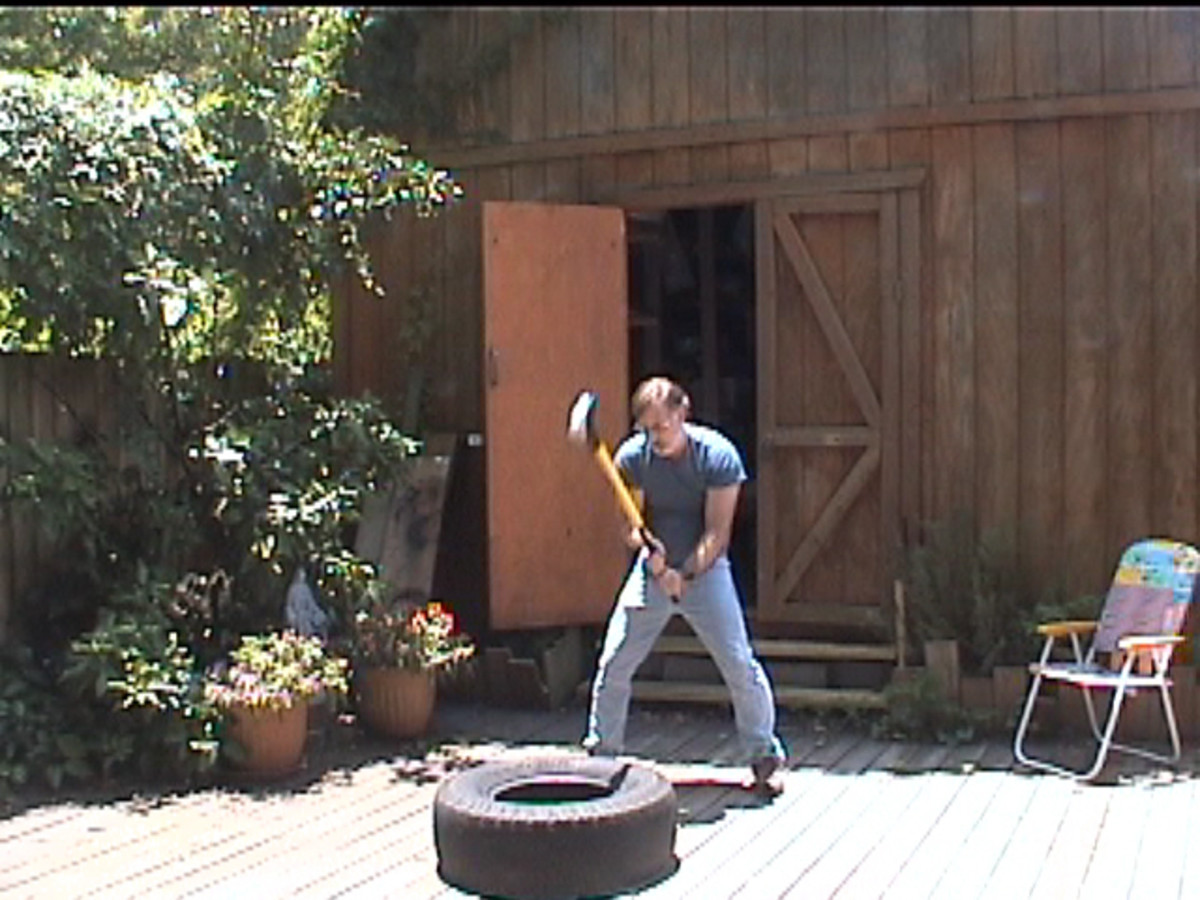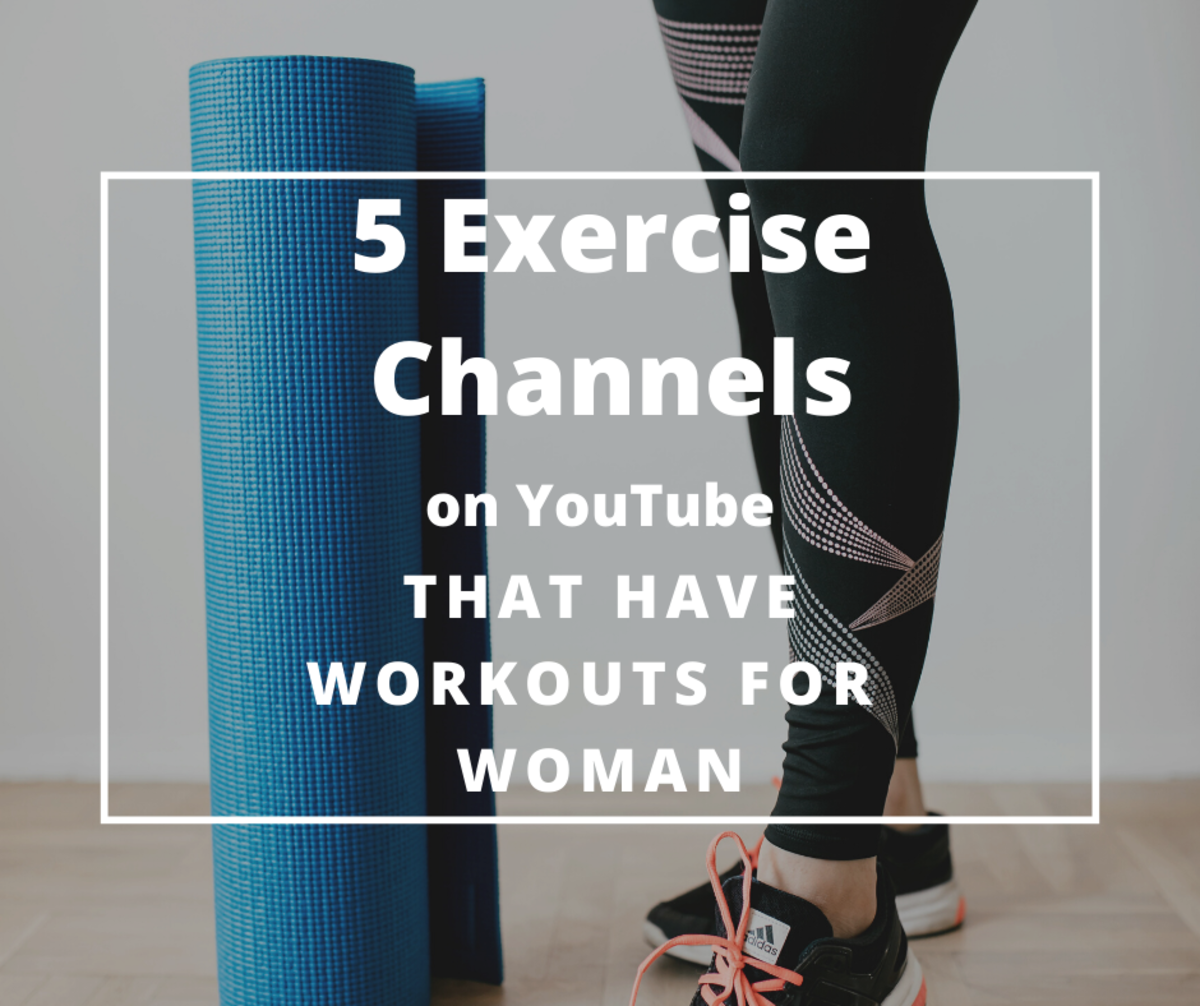Fitness 101: First Lesson By Alexa Hayes
Introduction
I am Alexa Hayes, and this is where my journey into fitness truly began. For years, I looked at fitness as something meant only for athletes or people who were already in great shape. I thought that if I didn’t have the perfect body or the strongest muscles, then I simply wasn’t cut out for it. The truth is, I was wrong. Fitness is not about comparison. It is about becoming a healthier, stronger version of yourself.

When I first decided to take my health seriously, I was overwhelmed. There were too many diets, too many workout plans, and too much advice coming from every direction. Like many beginners, I felt stuck before I even started. But I made a promise to myself: this was going to be my first lesson in truly living a healthier life. And now, I am here to share what I learned, step by step, so you don’t have to feel lost the way I did.
Statistics also show how important this decision can be. According to the Centers for Disease Control and Prevention, more than 60 percent of U.S. adults do not get the recommended amount of physical activity. That number shocked me. I realized I did not want to be part of that majority anymore. I wanted to take control of my body, my energy, and my future.
So, this first lesson is not just about workouts or diet. It is about building a foundation. Fitness is not a one-day project. It is a lifestyle that grows with time, discipline, and patience.
Why I Decided to Start
Like many people, my wake-up call came in small but powerful ways. I noticed I was always tired, even after sleeping enough hours. I found myself out of breath after climbing just a few stairs. My clothes felt tighter, and my self-confidence was slowly fading. These were not just physical signs. They were warnings that I needed to make a change.
I remember looking in the mirror one day and asking myself, “Is this really the best version of me?” The answer was no. That moment was painful, but it also lit a fire inside me. I did not want to spend my life feeling drained and unhappy. I wanted to feel strong and alive again.

Studies back this up. Research published in the Journal of the American Medical Association found that lack of physical activity increases the risk of cardiovascular disease, diabetes, and even certain types of cancer. Knowing this gave me another push. Fitness was not just about looking better, it was about living longer and healthier.
That decision changed my entire perspective. I no longer saw fitness as punishment or something I “had to” do. I saw it as a gift to my future self.
The Struggles I Faced in the Beginning
Let me be honest, the beginning was hard. I struggled with motivation. I struggled with soreness after workouts. I struggled with saying no to junk food that I had eaten for years. At times, I wondered if I was strong enough to keep going.
One of the hardest parts was dealing with comparison. Social media made it easy to look at people with perfect bodies and feel like I was failing. But then I learned an important truth: every person’s journey is different. Fitness is not about being the fastest or the fittest. It is about showing up for yourself every day, even when it is tough.
Another challenge was building consistency. According to a study by Strava, most people quit their New Year fitness resolutions by the second Friday of January. That showed me I was not alone in struggling. But it also taught me that the people who succeed are the ones who push through those first tough weeks.
I had to remind myself constantly that change takes time. Results do not happen overnight. What matters is progress, even if it is slow. And every small win—like lifting a little heavier, running a little longer, or resisting one unhealthy meal—was proof that I was moving in the right direction.
Understanding the True Meaning of Fitness
In the beginning, I thought fitness was only about looking good in a mirror. I thought it was about flat stomachs, toned arms, and perfectly sculpted bodies. But as I kept learning, I realized how wrong I was. Fitness is much deeper than appearance. It is about strength, energy, resilience, and mental clarity.
True fitness is not about punishing your body, it is about taking care of it. When I started exercising regularly, I noticed not only physical changes but also mental ones. I was less stressed, more confident, and more focused. That is because physical activity triggers the release of endorphins, often called the “happy hormones.”

Statistics back this up too. The Anxiety and Depression Association of America reports that regular exercise can reduce symptoms of anxiety by up to 30 percent. That number alone shows how powerful fitness can be for mental health.
So, the lesson I want to share is this: fitness is not only about how you look. It is about how you feel, how you live, and how you take care of your body for the long run.
The Mind-Body Connection
One of the biggest surprises for me was learning how closely the mind and body are connected. At first, I thought fitness was only physical. But the truth is, your mindset plays just as big of a role as your muscles.
When I doubted myself, my workouts felt harder. When I believed I could do better, I pushed through with more strength. That connection taught me that building mental resilience is just as important as building physical endurance.

Studies from the American Psychological Association confirm that people who approach fitness with a positive mindset are more likely to stick to their routines. It is not just about lifting weights or running miles. It is about believing in yourself enough to keep showing up.
I started practicing small mental habits like repeating affirmations, visualizing my goals, and celebrating little victories. Over time, these mental shifts helped me stay consistent, even on days I did not feel motivated.
So, fitness is not just about training your body. It is about training your mind to support the journey too.
The Importance of Setting Realistic Goals
When I first started, I made a mistake that many beginners do—I set goals that were way too big. I told myself I was going to lose a certain number of pounds in just a few weeks. I thought I would transform my body in a month. Of course, when that did not happen, I felt discouraged.
That is when I learned the importance of setting realistic goals. Fitness is not a race. It is a long-term commitment. Instead of focusing on unrealistic numbers, I started focusing on simple, achievable goals. Things like working out three times a week, drinking more water, or walking 10,000 steps a day.
Research supports this approach. The National Weight Control Registry found that people who set small, consistent goals are more likely to maintain long-term success. It is not about drastic changes, it is about sustainable habits.
By shifting my focus, I stopped chasing perfection and started celebrating progress. And that made all the difference.
Short-Term vs Long-Term Goals
When I began my journey, I quickly learned the difference between short-term and long-term goals. Short-term goals are those small victories you can achieve in weeks or even days. For example, committing to finish three workouts in a week or choosing water instead of soda at lunch. These are simple, achievable steps that keep you motivated. They give you that quick feeling of progress, and honestly, those wins matter a lot in the beginning when your motivation is fragile.
On the other hand, long-term goals are the big picture. These include things like losing 30 pounds in a year, running a marathon, or building enough strength to do pull-ups. These take time, patience, and consistency. Without short-term wins, it is easy to lose sight of the bigger goal.
One study published in the International Journal of Behavioral Nutrition and Physical Activity found that people who set both short-term and long-term goals were 33 percent more likely to maintain their routines compared to those who only focused on one or the other. This showed me that both types of goals are necessary.
For me, the key was learning to stack the small goals toward the big ones. Every time I checked off a short-term win, it felt like laying another brick in the foundation of my long-term success. Eventually, those bricks turned into something solid—a healthier, stronger version of me.
Why Most People Quit Early
Let’s be real: most people quit their fitness journey before they ever see real results. I almost did too. Why? Because we live in a world of instant gratification. We want everything fast; fast food, fast internet, fast results. But fitness does not work that way.
According to a 2021 survey by the fitness app MyFitnessPal, nearly 73 percent of people who start a workout routine quit within the first two months. That number shocked me, but when I thought about it, I understood why. People quit because they expect dramatic changes too quickly. When the scale doesn’t move or the mirror doesn’t show a six-pack in a few weeks, frustration sets in.
Another reason is burnout. Many beginners push themselves too hard, thinking intensity equals progress. They start with two-hour workouts or strict diets that are impossible to maintain. Eventually, the pressure becomes too much, and they give up completely.
The truth is, fitness is not about extremes. It is about balance. It is about making small, consistent choices that add up over time. That is why I always remind myself: progress is slow, but quitting guarantees no progress at all.
The Role of Nutrition in Fitness
When I started working out, I thought exercise alone would bring results. I believed if I spent an hour at the gym, I could eat whatever I wanted. But I quickly discovered that was not the case. Fitness is not just built in the gym, it is built in the kitchen too.
One thing I learned is that nutrition fuels everything. Without the right food, my energy levels were low, my recovery was slow, and my workouts felt harder. It is like trying to drive a car with the wrong fuel. The car may run, but not very well.
Statistics prove how critical this is. A study by the National Institutes of Health showed that 80 percent of weight management comes down to diet, while exercise makes up the remaining 20 percent. That does not mean workouts are unimportant, but it highlights how powerful nutrition really is.
The problem is, there is so much conflicting information out there. Low-carb, keto, vegan, intermittent fasting; it is overwhelming. What worked for me was keeping it simple: eating more whole foods, cutting back on processed snacks, and staying consistent with portion sizes.
Nutrition is not about perfection. It is about making better choices most of the time. That balance made me feel stronger, healthier, and more energized than ever before.
What I Learned About Eating Right
At first, I thought “eating right” meant eating less. I would skip meals, restrict calories too much, and then end up binging later. That cycle left me feeling worse instead of better. Over time, I realized eating right is not about eating less, it is about eating smarter.
I started focusing on whole, nutrient-dense foods: lean proteins, whole grains, vegetables, fruits, and healthy fats. I noticed my workouts improved when I fueled my body properly. Instead of feeling drained, I felt stronger and more capable.
Hydration also played a huge role. I used to ignore water and drink sodas or flavored drinks. Once I made the switch to water, I saw immediate changes. I had more energy, clearer skin, and better recovery after workouts.
The biggest lesson I learned is that food is not the enemy. It is the partner in your fitness journey. When you treat food as fuel instead of punishment or reward, everything changes.
Statistics on Diet and Fitness Success
I love numbers because they reveal truths we cannot ignore. And when it comes to diet and fitness, the statistics are eye-opening. For instance, the World Health Organization reports that poor diet is a leading risk factor for death worldwide, contributing to about 11 million deaths annually. That fact alone shows how powerful our food choices are.
In terms of fitness goals, a study published in Obesity Reviews found that people who combined exercise with dietary changes lost an average of 20 percent more weight compared to those who only exercised. That means even the best workout routine can only go so far if your diet does not align with it.
Another statistic that stuck with me is from the American Heart Association. They reported that people who eat balanced diets rich in fruits, vegetables, and whole grains are 25 percent less likely to develop heart disease. Those numbers motivated me more than any inspirational quote ever could.
So when I think about fitness now, I do not just think about the gym. I think about my plate, my water bottle, and the daily food choices that shape my future.
Building a Consistent Workout Routine
One of the hardest lessons I had to learn is that consistency is more important than intensity. I used to believe that unless I was doing long, exhausting workouts, I was not making progress. But that mindset led me to burn out fast.
Then I shifted my focus. I started with 20 to 30 minutes a day, just three times a week. It didn’t sound like much, but it was something I could stick to. And over time, it became a habit. The secret is not in doing extreme workouts, but in showing up regularly.
Statistics support this idea too. A Harvard Medical School study found that exercising even just 150 minutes a week, about 30 minutes a day for five days; is enough to significantly reduce the risk of heart disease, diabetes, and premature death. That is doable for anyone if they commit.
Consistency also helped me build discipline outside the gym. It taught me patience, resilience, and the value of routine. Fitness is like brushing your teeth; you do not skip it because you are tired. You do it because it is part of taking care of yourself.
Why Consistency Beats Intensity
I have to admit, when I first started, I pushed myself too hard. I thought the more intense the workout, the faster I would see results. But all it did was leave me sore, exhausted, and tempted to quit. That is when I realized consistency always wins over intensity.
Think of it like saving money. You do not get rich by depositing a huge amount once and never saving again. You build wealth by making regular deposits over time. Fitness works the same way. Small, consistent workouts add up to big results.
Research from the Journal of Physiology showed that people who exercised moderately and consistently gained more long-term fitness improvements than those who trained intensely but inconsistently. That fact changed my approach completely.
Now, instead of pushing myself to the limit every time, I focus on steady progress. It is not about how hard you can go in one session, it is about how often you can show up over months and years.
Beginner-Friendly Workout Examples
If you are just starting, here are some simple workouts that helped me build consistency without feeling overwhelmed:
-
Walking or Jogging: 20 to 30 minutes, three to four times a week. Perfect for building stamina and getting comfortable with movement.
-
Bodyweight Circuit: Push-ups, squats, planks, and lunges. Do three sets, resting one minute between each.
-
Beginner Yoga: Great for flexibility, stress relief, and improving balance. Just 15 minutes a day can make a difference.
-
Light Weight Training: Start with dumbbells or resistance bands. Focus on form, not heavy lifting.
The goal is not to do everything at once. Start small, master the basics, and build up gradually. That is how you stay consistent and avoid burnout.
The Importance of Rest and Recovery
When I first started my fitness journey, I thought more was always better. If I worked out every single day, surely the results would come faster. But what I learned is that rest is just as important as exercise itself. Without recovery, your body cannot grow stronger.
Here’s why: every time you work out, especially with strength training, you are actually creating tiny tears in your muscles. It sounds scary, but it is normal. Those tears are what allow muscles to repair and grow. The repair happens during rest, not during the workout. If you don’t give your body time to recover, you risk injury, burnout, and stalled progress.
Studies back this up. According to the National Academy of Sports Medicine, people who skip recovery days are 40 percent more likely to experience overtraining syndrome, which can lead to fatigue, insomnia, and even hormonal imbalances. I personally experienced this when I tried pushing myself too hard. I was constantly sore, tired, and moody. Once I started honoring rest days, my performance improved dramatically.
Rest does not mean doing nothing at all. Active recovery like stretching, yoga, or even a gentle walk can keep blood flowing and speed up healing. So now I treat recovery as part of my routine, not as a sign of weakness. Rest is fuel for progress.
How Sleep Affects Your Fitness Progress
I cannot stress enough how powerful sleep is when it comes to fitness. In the beginning, I thought only workouts and diet mattered. But after a few months of late nights and early mornings, I realized my progress had stalled. That is when I discovered the role of sleep.
When you sleep, your body releases growth hormone, which helps repair muscle tissue and build strength. Without enough rest, your body does not recover properly, and your workouts become less effective.
Research from the Journal of Clinical Sleep Medicine found that people who slept less than six hours per night were more likely to struggle with weight loss compared to those who got seven to eight hours. Lack of sleep also leads to higher levels of cortisol, the stress hormone, which increases cravings for unhealthy food. I definitely noticed that on days I slept poorly, I craved sugar and junk food like crazy.
Since then, I made sleep a priority. I aim for at least seven hours a night, sometimes eight when my workouts are more intense. I also set up a bedtime routine: no screens an hour before bed, dim lights, and a comfortable sleep environment. Once I started prioritizing sleep, my workouts felt stronger, my mood improved, and I saw better physical results.
The Role of Mental Health in Fitness
For a long time, I believed fitness was only about physical strength. But the more I practiced, the more I realized how deeply mental health is connected to the journey. When my mind was in a good place, I was more motivated to work out, eat well, and stay consistent. When I was stressed or anxious, everything felt harder.
The truth is, exercise is one of the best natural ways to improve mental health. It reduces stress hormones like cortisol and boosts endorphins, which act as natural mood lifters. The Mayo Clinic even reports that exercise can reduce symptoms of depression and anxiety by up to 25 percent. That is a huge number, and I felt it personally. After a workout, I always felt calmer, clearer, and more in control.
But mental health is not just about exercise. It is also about the way we talk to ourselves. In the beginning, I was harsh on myself, criticizing every mistake. Over time, I learned that self-compassion was a much better motivator than self-criticism. When I treated myself with kindness, I found it easier to stay on track.
Now, I see fitness as therapy for both my body and my mind. It is my outlet, my reset button, and my way of building resilience.
The Value of Tracking Your Progress
One of the most motivating lessons I learned was the power of tracking. In the beginning, I would work out without paying much attention to numbers or details. But then I realized I was missing out on a huge source of motivation.
Tracking progress can mean a lot of things; logging your workouts, writing down how much weight you lifted, measuring your body, or even just noting how you feel after a session. These little details help you see how far you’ve come, even when the mirror doesn’t show big changes.
A study published in the American Journal of Preventive Medicine found that people who tracked their food and exercise lost twice as much weight as those who didn’t. That is powerful. I started using a simple journal and sometimes an app to record my workouts. Seeing the numbers go up; whether it was running an extra mile or lifting heavier, was incredibly motivating.
Tracking also keeps you honest. It is easy to forget a skipped workout or overestimate how well you are doing, but numbers do not lie. They show you exactly where you are and what you need to work on.
For me, tracking is not about obsession. It is about awareness. And awareness is what keeps me consistent and focused on my goals.
The Social Side of Fitness
I used to think fitness was something you had to do alone. But over time, I discovered how powerful community can be. Having people to share the journey with made it not only easier but also more enjoyable.
Joining a fitness class, working out with a friend, or even being part of an online group can make a huge difference. Research from the University of Aberdeen showed that people are more likely to stick to their exercise routine if they do it with a partner. The study found that participants exercised more frequently and reported higher enjoyment when they had social support.
I noticed this myself. On days when I worked out with a friend, I pushed harder and laughed more. On days when I shared my progress online, I felt motivated to keep going. Fitness stopped being just about me; it became about connection, encouragement, and accountability.
The social side of fitness also teaches us empathy. We learn to celebrate each other’s victories, no matter how small. And when someone else struggles, we offer support because we’ve been there too. That kind of community is priceless.
How to Stay Motivated on Hard Days
Motivation is not always there, and I learned that the hard way. In the first few months of my journey, I woke up some mornings full of energy and excitement. But on other days, the thought of working out felt impossible. I used to beat myself up for feeling that way until I realized that everyone goes through it. The difference between those who succeed and those who give up is learning how to push forward even on the tough days.
One strategy that worked for me was focusing on my “why.” I asked myself: Why did I start this? The answer was always deeper than looking good. I wanted to feel stronger, live longer, and have the energy to enjoy my life. Remembering that kept me going when I wanted to quit.
Another tip was keeping things small. If I didn’t feel like doing an intense workout, I promised myself I would just move for 10 minutes. More often than not, those 10 minutes turned into 30. Motivation grows once you start moving.
Statistics also show how important mindset is. According to a report by the American Council on Exercise, people who frame exercise as a choice rather than a chore are 50 percent more likely to stay consistent. That simple mental shift kept me going on my hardest days.
So now, I don’t wait for motivation to magically appear. I build discipline by starting small, reminding myself of my goals, and trusting that consistency will carry me through.
Why Balance Is Key in Fitness
One of the biggest lessons I learned is that balance is everything. In the beginning, I swung between extremes, I would work out too much, then skip for days. I would eat super clean for a week, then binge on junk food. Those swings left me feeling stuck in a cycle of guilt and frustration.
What finally worked was finding balance. That meant allowing myself to enjoy pizza with friends without feeling like I had failed. It meant knowing that skipping a workout sometimes does not erase all my progress. Balance gave me freedom, and freedom gave me consistency.
Health experts agree with this approach. The Dietary Guidelines for Americans recommend the “80/20 rule,” where 80 percent of your diet comes from healthy, nutrient-rich foods and 20 percent allows for flexibility. This balance makes healthy living sustainable instead of stressful.
I now see fitness as part of my lifestyle, not a punishment. Balance means you can enjoy life while still moving toward your goals. It is about consistency, not perfection. And when you embrace balance, you stop seeing fitness as something temporary and start seeing it as something you can maintain for life.
Learning to Listen to Your Body
At the beginning, I ignored my body’s signals. I thought soreness meant I wasn’t working hard enough, so I pushed through pain. I thought hunger meant I was failing my diet, so I restricted food. But the truth is, your body is always talking to you. you just have to listen.
I learned that there’s a difference between good pain and bad pain. Good pain is the soreness that comes from challenging your muscles. Bad pain is sharp, persistent, and usually a warning sign of injury. Ignoring that only sets you back.
The same goes for food. Hunger is not a weakness, it is your body asking for fuel. Once I started eating when I was truly hungry and stopping when I was satisfied, I felt better and performed better.
Science supports this too. A study from the Journal of Strength and Conditioning Research showed that athletes who listened to their body’s fatigue signals had lower injury rates and improved long-term performance compared to those who ignored them.
Now, I view my body as a partner in this journey. It tells me when to push, when to rest, and when to fuel up. Listening to it made all the difference.
Avoiding Common Beginner Mistakes
Looking back, I made so many mistakes when I first started. And that’s okay—it’s part of learning. But I want to share the biggest ones so you don’t have to repeat them.
-
Doing too much too soon: I thought pushing myself to extremes would bring fast results, but it only led to burnout and soreness.
-
Neglecting nutrition: I believed workouts were enough, but diet played an even bigger role.
-
Skipping rest days: I felt guilty for taking breaks, not realizing rest is part of the process.
-
Chasing quick fixes: I wasted time on fad diets and “miracle” supplements that didn’t work.
-
Comparing myself to others: This one stole a lot of my joy until I learned to focus on my own progress.
Research shows that nearly 80 percent of beginners give up because they fall into these traps. That’s why awareness is powerful. Once I recognized these mistakes, I could fix them and move forward with confidence.
Now, instead of striving for perfection, I focus on building better habits. Mistakes are part of the journey, but they don’t have to define it.
Celebrating Small Wins
One of the most important shifts I made was learning to celebrate the little victories. At first, I only cared about big results; losing weight, looking toned, or running long distances. But those results take time, and without small celebrations, I would have given up long before reaching them.
I started noticing things like being able to carry groceries without getting winded, sleeping better at night, or choosing a healthier meal without overthinking it. Those were signs that I was improving, even if the scale didn’t move.
Psychologists say this matters a lot. A study from Behavioral Science & Policy found that celebrating small milestones boosts motivation and increases the likelihood of long-term success. It gives your brain a dopamine hit, which reinforces positive habits.
Now, I celebrate every little step forward. Did I drink enough water today? Win. Did I make it to the gym even though I was tired? Win. These small victories stack up, and over time, they create massive transformation.
Why Patience Matters in Fitness
Patience is the lesson I struggled with the most. In the early days, I wanted quick results. I expected to see major changes in my body after just a few weeks of working out and eating better. When I didn’t, frustration set in. I thought maybe I wasn’t working hard enough, or maybe fitness just wasn’t for me. But over time, I realized that patience is the most powerful tool in any fitness journey.
Here’s the truth: your body doesn’t transform overnight. Real change takes months, sometimes even years. Studies show that it takes an average of three to six months of consistent training and nutrition for visible results to appear. That’s not what most of us want to hear, but it’s reality. And once I accepted that, I was able to relax and trust the process.
Patience also taught me to focus on progress instead of perfection. Instead of obsessing over the scale, I celebrated being able to do one more push-up, run one more mile, or lift a little heavier. These small steps were proof that my body was changing, even if the mirror didn’t show it yet.
The greatest gift of patience is peace of mind. Once you stop rushing the process, you start enjoying it. You realize fitness is not a destination, it’s a lifelong journey.
The Long-Term Benefits of Fitness
When I first started, I only thought about short-term goals: losing a few pounds, toning my body, or fitting into old clothes. But as time passed, I began to see the bigger picture. Fitness isn’t just about today, it’s about the future.
Research from the American Journal of Public Health shows that people who exercise regularly live up to seven years longer than those who don’t. Beyond that, regular movement lowers the risk of heart disease, diabetes, and certain cancers. These are not small benefits, they’re life-changing.
But fitness isn’t just about adding years to your life. It’s about adding life to your years. I noticed I had more energy to do everyday things like hiking with friends, traveling, or even just playing with kids in my family. My body no longer felt like it was holding me back.
The mental health benefits also extend into the future. Exercise reduces the risk of cognitive decline as you age. According to the Alzheimer’s Association, regular physical activity lowers the chance of developing dementia by nearly 30 percent. That fact alone makes me grateful I started my journey.
The long-term benefits remind me why I started and why I’ll never stop. Fitness isn’t a phase, it’s an investment in the best version of myself for years to come.
How Technology Can Help Your Fitness Journey
When I began, I didn’t use any apps, trackers, or digital tools. But eventually, I realized technology could be a powerful partner in my journey. Fitness trackers, apps, and even online communities made it easier for me to stay consistent and motivated.
For example, step counters helped me stay active throughout the day. Food logging apps gave me awareness of my eating habits. Online workout platforms allowed me to follow guided routines from home. These small tools created structure and accountability.
Statistics highlight this impact too. A study published in The Lancet Digital Health found that people who used fitness apps were 27 percent more likely to stay active compared to those who didn’t. That number shows how powerful technology can be.
Of course, technology isn’t magic, it won’t do the work for you. But it can make the journey smoother. I learned to use it as a guide, not as a crutch. It helped me track progress, celebrate milestones, and connect with others who shared the same goals.
Technology, when used wisely, can transform your fitness journey into something more engaging and sustainable.
Staying Consistent Through Lifestyle Changes
What finally helped me turn fitness from a phase into a lifestyle was making small but lasting changes. Instead of seeing workouts and healthy eating as temporary fixes, I made them part of my daily life.
I started walking more by parking farther from stores. I swapped out soda for water. I added more vegetables to my meals. These didn’t feel like huge sacrifices, but over time, they added up.
Studies support this approach. According to the Centers for Disease Control and Prevention, people who focus on lifestyle changes rather than quick fixes are twice as likely to maintain their results long-term. Crash diets and extreme workout plans may bring fast changes, but they rarely last.
Consistency through lifestyle shifts is about building habits that feel natural. For me, it became as normal as brushing my teeth. I don’t think about whether I’ll move my body today, I know I will, because it’s part of who I am now.
That’s the true goal of fitness: not temporary results, but permanent change.
Conclusion – My First Lesson to You
I am Alexa Hayes, and this was my first lesson in fitness. When I started, I felt lost, confused, and unsure if I could stick with it. But I learned that fitness is not about perfection—it’s about patience, balance, consistency, and self-love.
I faced struggles, setbacks, and moments of doubt. But I also discovered strength I didn’t know I had. I realized fitness is more than exercise, it’s nutrition, rest, mental health, and the way we treat ourselves every single day.
The journey is not always easy, but it is always worth it. If you take one thing away from my story, let it be this: your fitness journey is not about comparison. It is about becoming the best version of yourself, one step at a time.
So take that first step. Celebrate small wins. Be patient with the process. And most of all, believe that you are capable of more than you think. That is the first lesson I can give you, and the one I carry with me every single day.
FAQs
1. How long does it take to see results from fitness?
Most people notice small changes in 4 to 6 weeks, but visible results often take 3 to 6 months of consistent effort.
2. Do I need a gym to get fit?
Not at all. Bodyweight exercises, walking, running, yoga, and at-home routines can all build strength and stamina without a gym membership.
3. How important is diet compared to exercise?
Studies suggest that diet makes up about 70–80 percent of results, while exercise covers the remaining 20–30 percent. Both are important for overall health.
4. Can I work out every day?
It’s better to include rest or active recovery days. Overtraining can increase the risk of injury and slow your progress.
5. What if I lose motivation?
Focus on your “why,” set small goals, and remember that discipline is stronger than motivation. Even showing up for 10 minutes counts.














